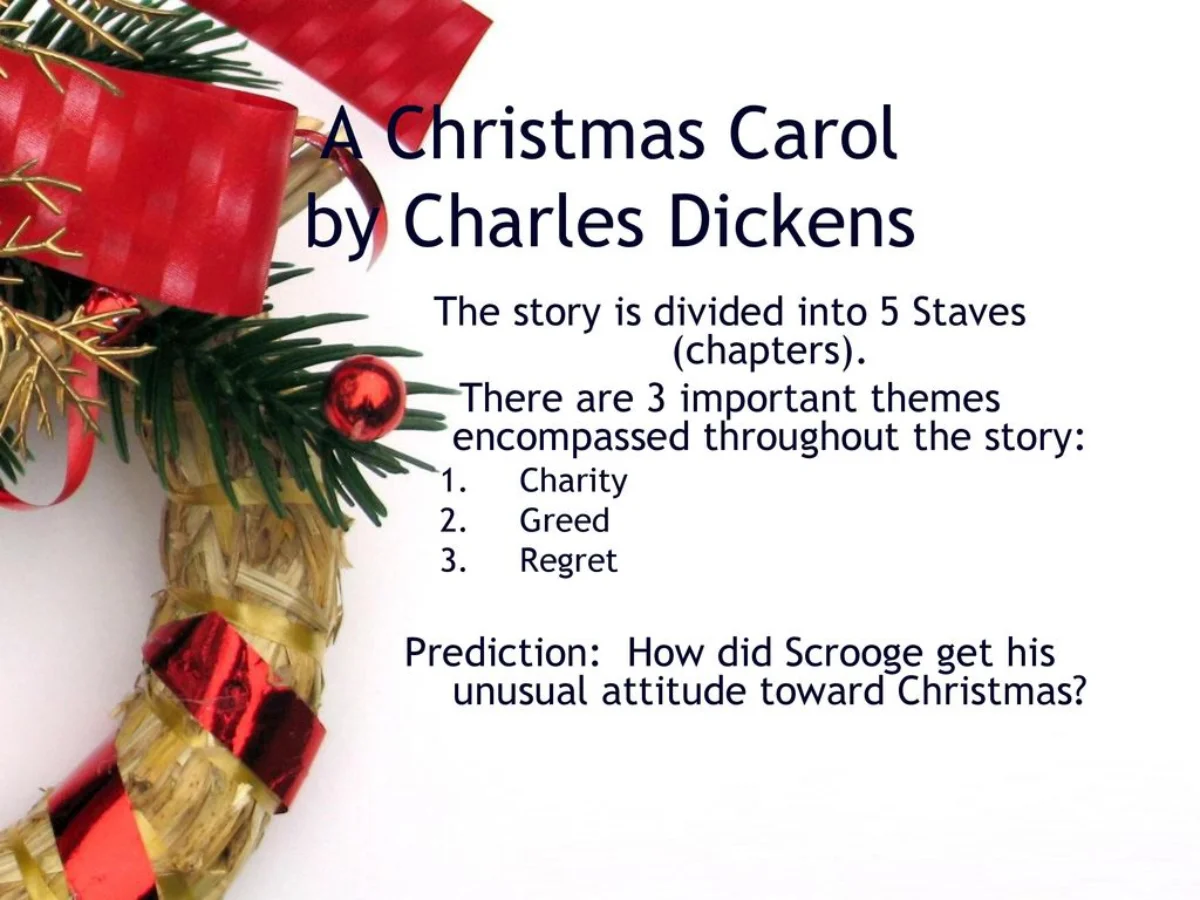Introduction
“A Christmas Carol,” penned by the renowned author Charles Dickens, is not just a heartwarming holiday tale. It’s a story that weaves a tapestry of predictions, offering readers a glimpse into the future. In this article, we’ll explore the subtle art of prediction within the narrative and how it has captured the imaginations of readers for generations.
The Timeless Tale: “A Christmas Carol”
Before delving into the predictions, let’s set the stage. “A Christmas Carol” tells the story of Ebenezer Scrooge, a miserly old man visited by three ghosts on Christmas Eve. Through these spectral encounters, Scrooge’s past, present, and potential future are revealed.
Foreshadowing Future Events
Dickens’ Masterful Techniques
Charles Dickens was a master of foreshadowing, the literary technique of hinting at events that will occur later in the story. As Scrooge encounters each ghost, we witness glimpses of his potential future. Dickens crafts these scenes with precision, leaving readers both intrigued and anxious about what lies ahead.
The Mysterious Ghosts
The three ghosts themselves serve as symbols of prediction:
- The Ghost of Christmas Past: This ethereal figure transports Scrooge back in time, showing him events from his earlier years. In doing so, it sets the stage for the revelations that will follow.
- The Ghost of Christmas Present: This spirit reveals the current state of Scrooge’s world, showcasing both joyous and sorrowful scenes. It’s a snapshot of the present, a crucial element in predicting the future.
- The Ghost of Christmas Yet to Come (Future): This enigmatic figure represents the future, shrouded in mystery. Its ominous silence as it leads Scrooge through a bleak tomorrow is a chilling prediction of what awaits if he doesn’t change his ways.
Interpreting the Predictions
The predictions embedded in “A Christmas Carol” are not limited to Scrooge’s personal journey. They extend to the broader themes of compassion, generosity, and the potential for redemption. Dickens invites readers to consider their own futures and the impact of their actions on others.
The Impact of “A Christmas Carol”
Since its publication in 1843, “A Christmas Carol” has become a holiday classic, touching the hearts of countless readers. Its enduring popularity is a testament to the power of Dickens’ storytelling and the timeless relevance of its predictions. The tale reminds us that it’s never too late to change, to embrace the spirit of giving, and to shape a brighter future.
Conclusion
“A Christmas Carol” isn’t just a story of the holiday season; it’s a tale of transformation and the art of prediction. Charles Dickens’ narrative techniques, coupled with the symbolism of the three ghosts, create a compelling exploration of past, present, and future. As readers, we are left with the profound understanding that our choices today shape the predictions of tomorrow.
5 Unique FAQs
FAQ 1: Did Charles Dickens believe in the supernatural?
While Charles Dickens was fascinated by the supernatural and incorporated elements of it into his works, there’s no concrete evidence to suggest that he believed in ghosts or other supernatural entities in real life.
FAQ 2: How have adaptations of “A Christmas Carol” interpreted the predictions differently?
Various adaptations of “A Christmas Carol” have emphasized different aspects of the predictions. Some focus on the supernatural elements, while others highlight the social and moral themes.
FAQ 3: Are there other works by Dickens that explore predictions and the supernatural?
Yes, Dickens’ fascination with the supernatural is evident in several of his works, including “The Signal-Man” and “The Haunted Man and the Ghost’s Bargain.”
FAQ 4: What is the moral of “A Christmas Carol”?
The primary moral of “A Christmas Carol” is the transformative power of compassion and generosity. It suggests that people can change for the better and make a positive impact on others through their actions.
FAQ 5: Why is “A Christmas Carol” considered a timeless classic?
“A Christmas Carol” is considered a timeless classic because its themes of redemption, compassion, and the potential for change resonate with readers of all generations. The predictions within the story continue to captivate and inspire audiences worldwide.
Read more: https://lookupin.co.uk/
